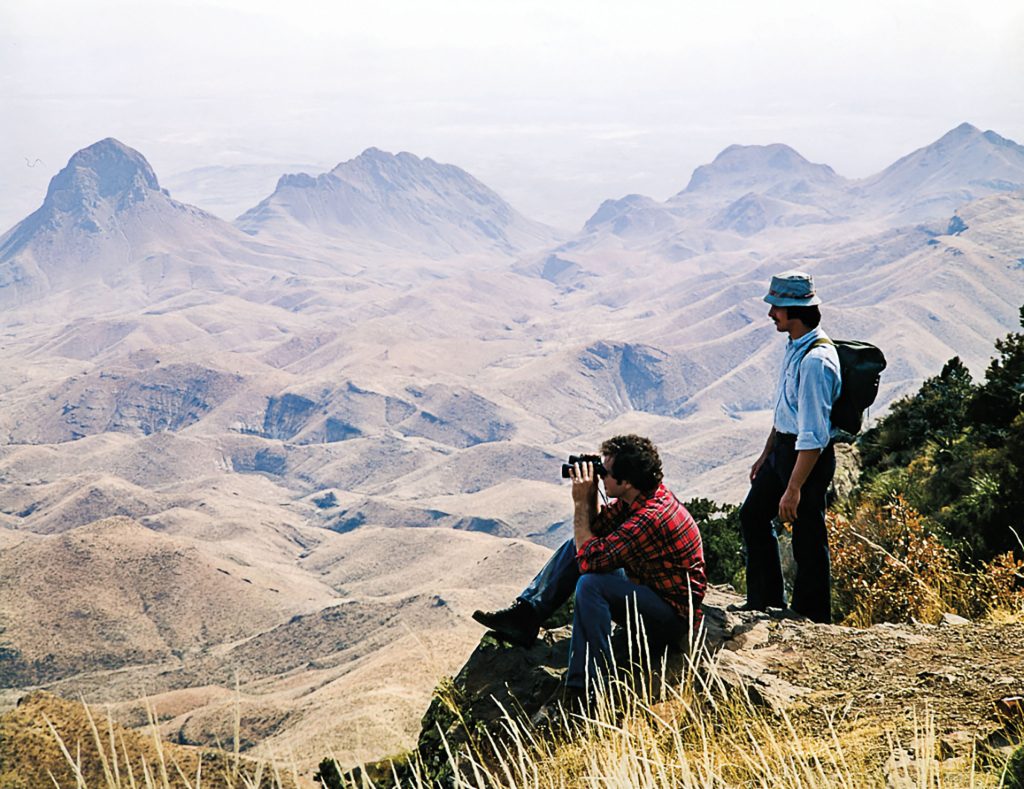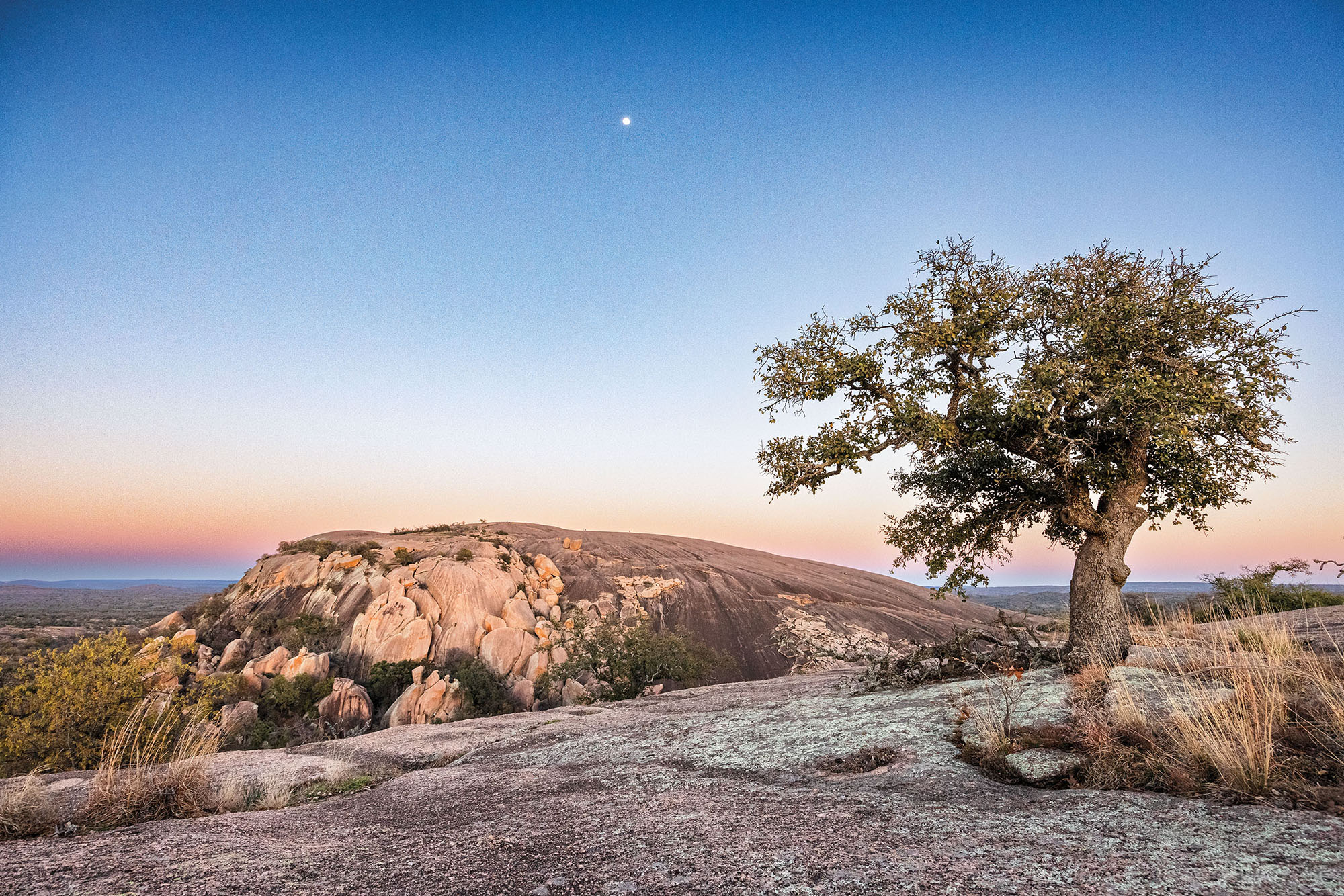
Rock
Star
Natural areas like Frederickburg’s beloved Enchanted Rock make the case for more public land
An oak tree grows through granite on the edge of Little Dome as pastels of dusk settle over nearby Enchanted Rock.
The economy is in free fall despite new developments in technology allowing you to work more efficiently, accomplishing in an hour what previously might have required days. The country has just waged a long campaign against an unseen enemy that killed millions around the globe. But in Texas, the governor feels your pain and speaks eloquently to your fatigue. Such was the milieu in May 1923, when Gov. Pat Neff enabled legislation for the formation of the Texas State Parks system and donated his own property to the nascent endeavor.
“Nothing is more conducive to the happiness and contentment of a people, a State’s most valuable asset, than for them to go ‘back to nature,’” Neff wrote in a letter to the 38th Texas Legislature, “where the bees hum, the birds sing, the brooks ripple, the breezes blow, and the flowers bloom. Here, spending their hours of recreation on blue-bonneted hills and daisy-decked meadows … the old grow young, the sick regain health, and the weary enjoy a quiet rest.”
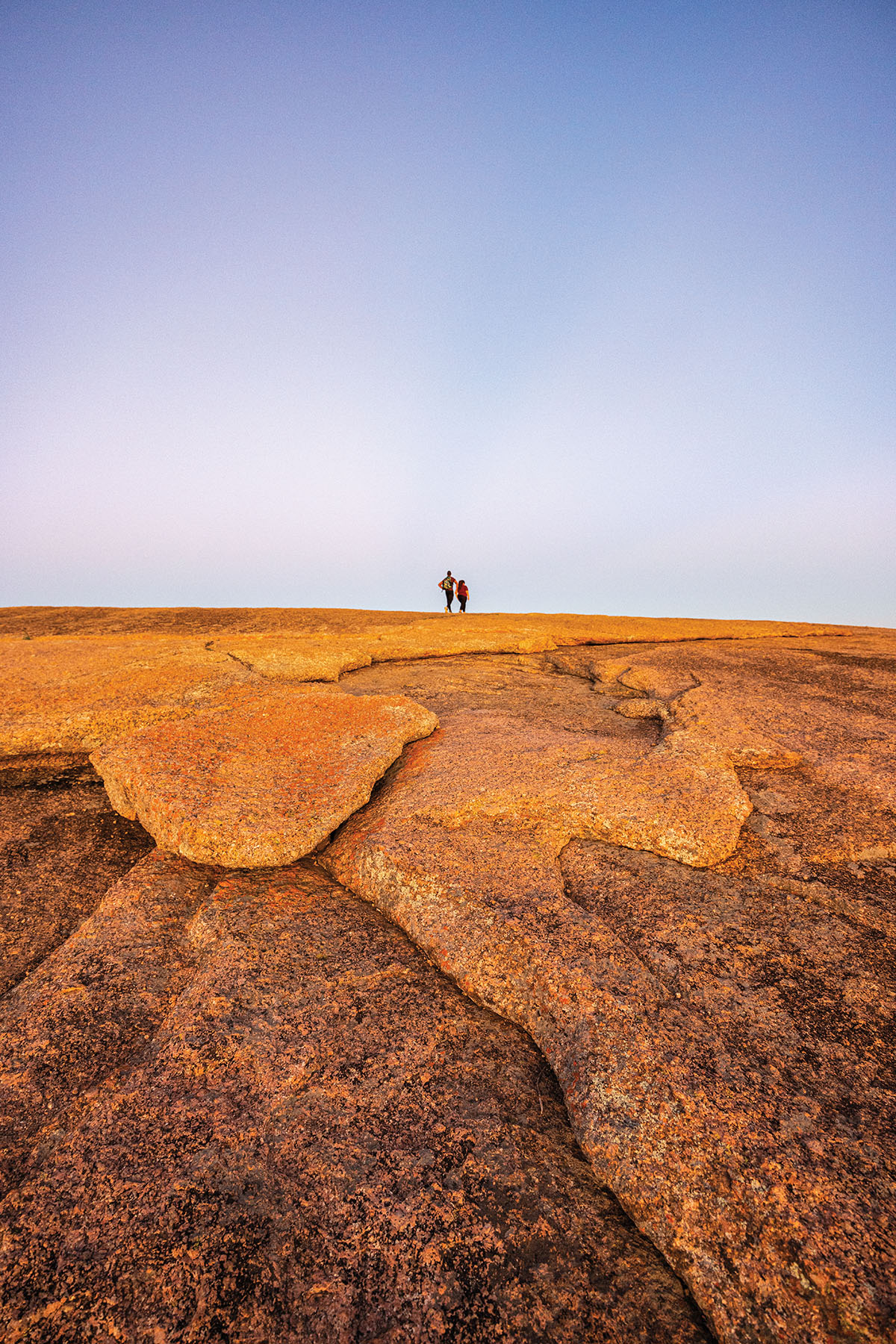
Neff knew from experience. For years, travelers had stopped at his family’s ranch along the Leon River, where they were greeted with hospitality by his mother, Isabel Neff. While there, the visitors delighted in the sorts of activities we like to ascribe to slower, better times: cooking over campfires, playing music, and just visiting. The governor saw the myriad benefits of the great outdoors.
This, however, is not a story about parks but about the wildly popular Enchanted Rock State Natural Area and other natural areas, a lesser-known and sometimes misunderstood category within the state parks system. There are three categories under the Texas Parks and Wildlife Department’s umbrella: parks, natural areas, and historic sites. Parks and natural areas—with their emphases on place—intersect to create history. So, in a way, every site is a historic site. And learning these places’ history and their ecology can be a deeper kind of learning. But there are so many people now, and the natural areas so tiny and isolated. How do we enjoy those places without enjoying them too much? The math is simple. We need more of them, and they need to match Texas’ mighty size.
I’m a lifelong environmentalist who has published several books on the topic. I also came of age in Texas but fled to the wide open spaces of the American West, and I have always thought of my home state’s parks as islands scattered across a vast sea of concrete, a republic of barbed wire. Texas has 89 state parks, natural areas, and historic sites totaling more than 600,000 acres. That sounds like a lot, but it’s less than 5% of the state’s landmass. And just under half of that number belongs to a single property: Big Bend Ranch State Park. The latter is mostly void of water, a place for tarantulas and other creatures supremely adapted to extreme heat and aridity.
The Texas Administrative Code has language that attempts to define the difference between the three categories. The institutional momentum of the parks, first designated in 1923, as well as the word “park” itself, tends to overshadow the concept of “natural area”—the first two of which were Enchanted Rock and Lost Maples. In short, state parks are dedicated to recreation. They’re likely to have horseshoe pits and canoe and bike rentals—sometimes even air-conditioned lodges—but usually not swimming pools or snow cone machines. Natural areas, in theory, are committed more to the preservation of the biological integrity of a place.
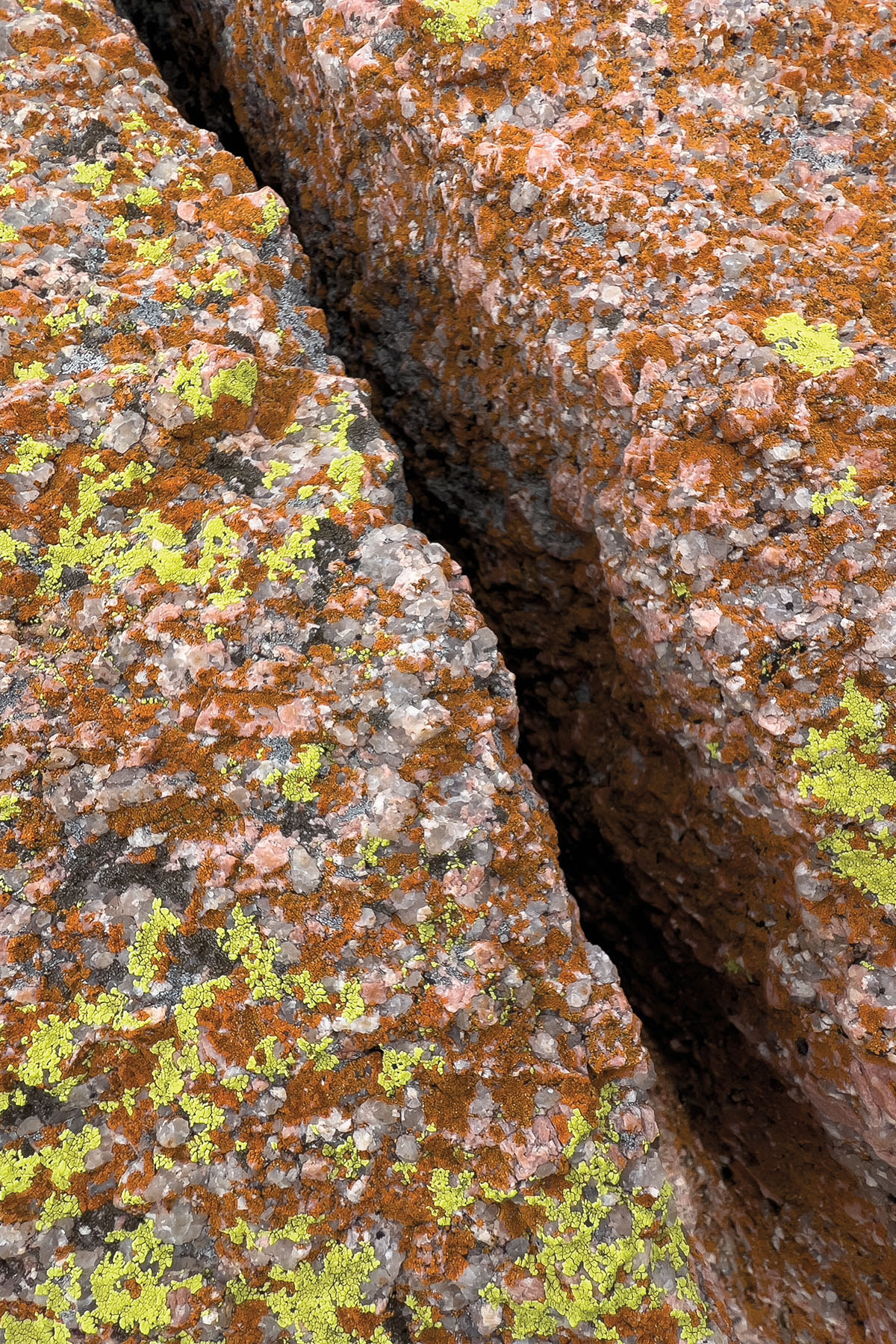
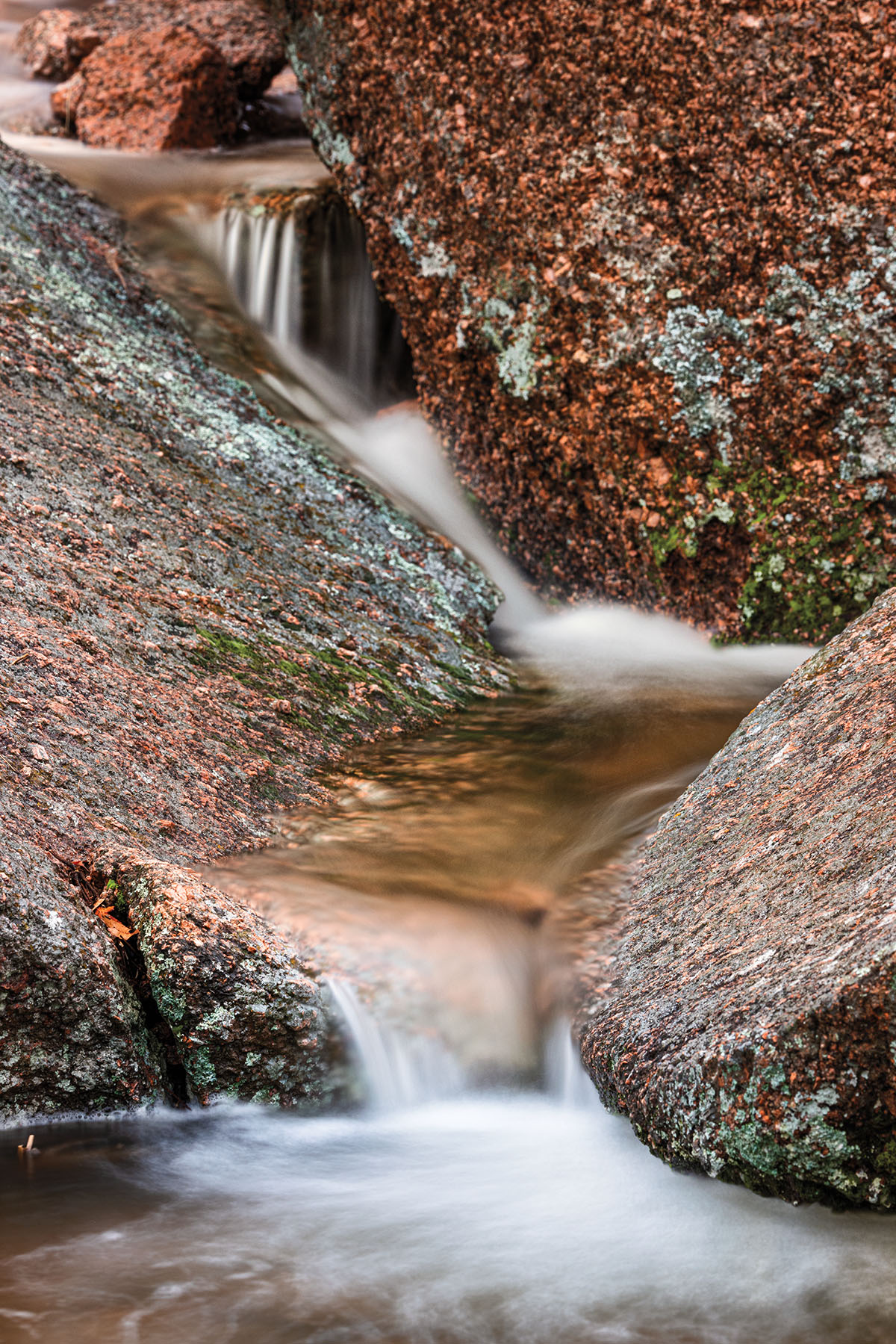
Yet, there sometimes remains too much of the influence of the park system upon our natural areas. Why, for instance, are mountain bike trails necessary in or even relevant to a “natural area?” Ditto the quirky “sport” of geocaching, which would seem to distract travelers from the opportunity we seek to preserve and provide: a deeper examination of the natural world in something approximating its unspoiled condition.
Located on more than 1,600 acres about 100 miles northwest of Austin, Enchanted Rock is a good example of this conundrum. During a visit there in February with my traveling partner, Carter, I marvel at how the three main peaks comprising the area—Enchanted Rock, Little Dome, and Turkey Peak—look like vertebrae connecting in a spine. The batholith of 1.1-billion-year-old granite is the oldest outcropping of granite in the world. The dome, an exfoliating shield that was once as deep as 7 miles beneath the surface before erosion, covers 600 acres. It rises 425 feet above the surrounding countryside—not even a tiny freckle upon the earth but nonetheless celebrated with awe by Texans.
While Enchanted Rock is not a park but a natural area, Superintendent Doug Cochran still says, “Enchanted Rock is the fourth- or fifth-most visited park in Texas.” Note the verbiage. There are 277 parking spots, and in the peak seasons there was often a 1- to 2-mile line of cars waiting at the entrance before a new system was implemented in 2019. Enchanted Rock has hot showers and group day-use facilities—luxuries that don’t exactly mitigate the parking lot problem.
Overuse is among the largest challenges to parks, and even more so to natural areas, whose existence is predicated upon preserving their ecological integrity. Cochran sits at his desk looking at a calendar far into the future, answering calls about trail closures. He points to a sun-faded piece of paper in a glass frame: TPWD’s mission statement. “I look at it daily,” he says. To manage and conserve the natural and cultural resources of Texas and to provide for hunting, fishing, and outdoor recreation opportunities for the use and enjoyment of present and future generations.
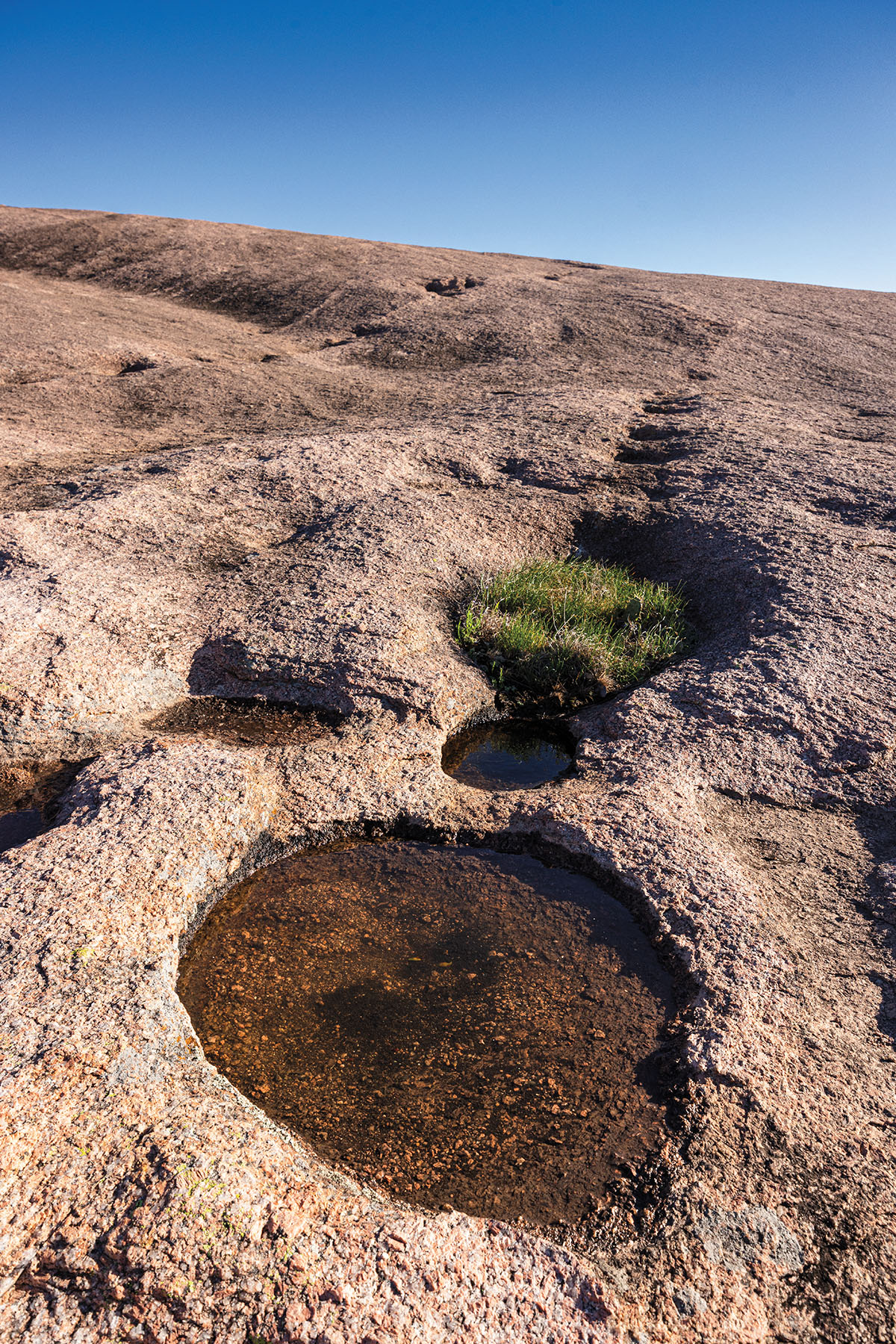
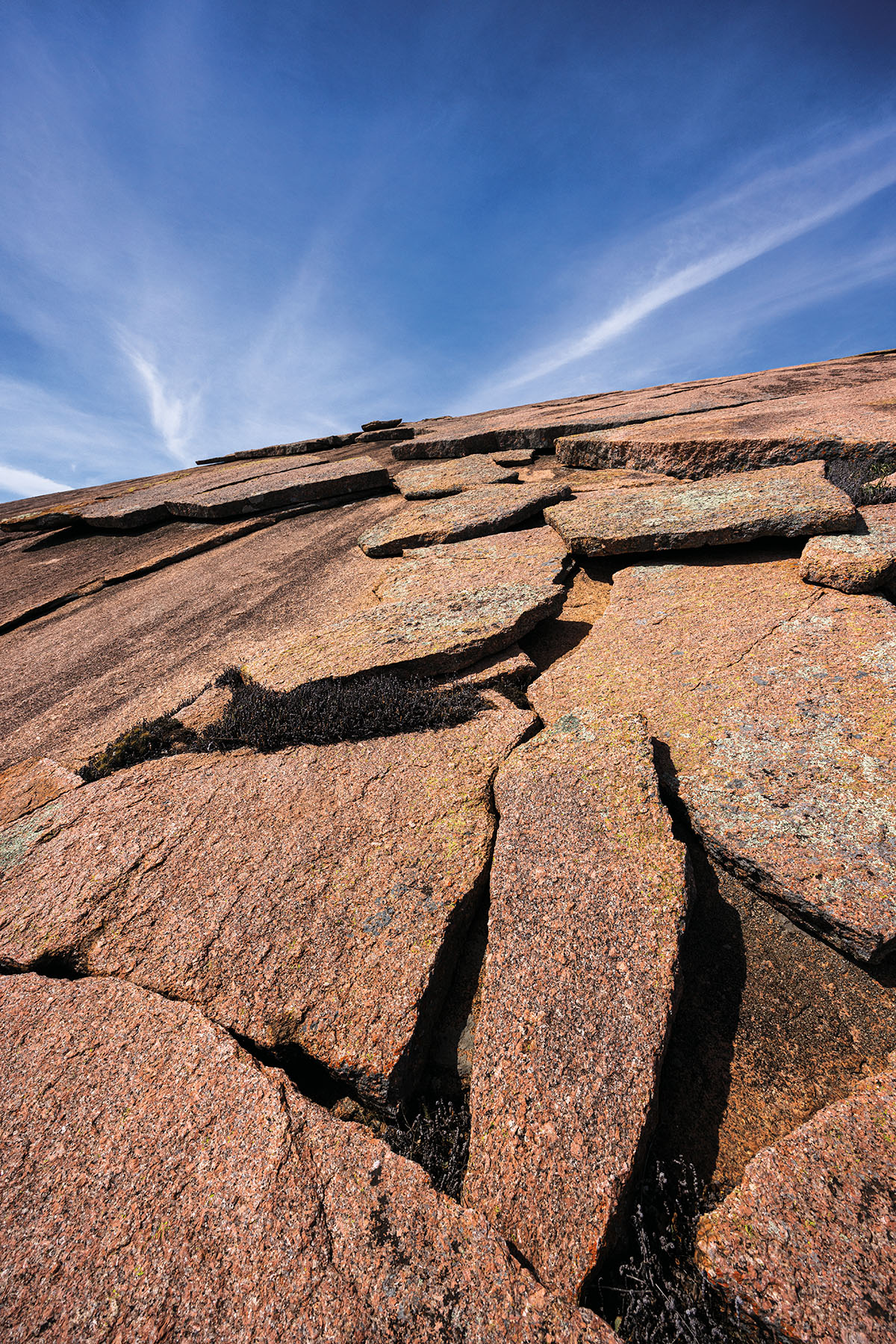
Natural areas are open to hunting. The main target at Enchanted Rock is white-tailed deer. Hunters are also allowed to kill any exotic animals they encounter—aoudad, axis deer, wild boar, whatever—as if a circus truck had overturned and spilled these entertainments into the surrounding countryside. It’s the only defense, really, as there is no active plan to manage the natural area’s exotics. Nevertheless, hunters are not an issue for Cochran.
“The vast majority of my challenges are health concerns,” he says. Cochran cites heatstrokes and heart attacks, broken bones and twisted knees and ankles, and people who get lost. “Also, a lot of dogs get sick,” he says, “which is very sad and hard on our staff.”
Natural area personnel also provide infrastructure and communications support for the surrounding landowners during floods and wildfires. A few state natural areas have “Friends of” groups that provide additional support. For example, Lost Maples State Natural Area volunteers remove large tropical plants called elephant ears, an aquatic invasive species that chokes out native vegetation if left unchecked. Meanwhile, Enchanted Rock owes its protected status to the work of mountain climbers who, with the help of former first lady of Texas Lady Bird Johnson, facilitated its purchase in 1978. The transaction between Llano rancher Charles H. Moss and the Nature Conservancy of Texas, which passed it on to the state, saved the second-largest exposed mountain of bedrock in the country from being turned into, incredibly, a quarry.
Hordes of outdoors enthusiasts of all skill levels regularly hike the dome, often as a warm-up to an afternoon of gallivanting in nearby Fredericksburg. Walking the rock, I want to touch the smooth places as well as the rough, run my hands across the nuggets and crystals of pink feldspar sparkling like something from the land of Oz. Rain wears the granite smooth, as do the wind and the relentlessness of the human footprint. Cochran has been superintendent of Enchanted Rock for 10 years, and when I ask if there are any annual inventories or transects to show the expansion or contraction of species other than our own, he says not really. Some universities, such as Texas Tech, come out looking for this or that rare plant, but for the most part, the energy is spent just trying to manage the people who are drawn like butterflies to milkweed.
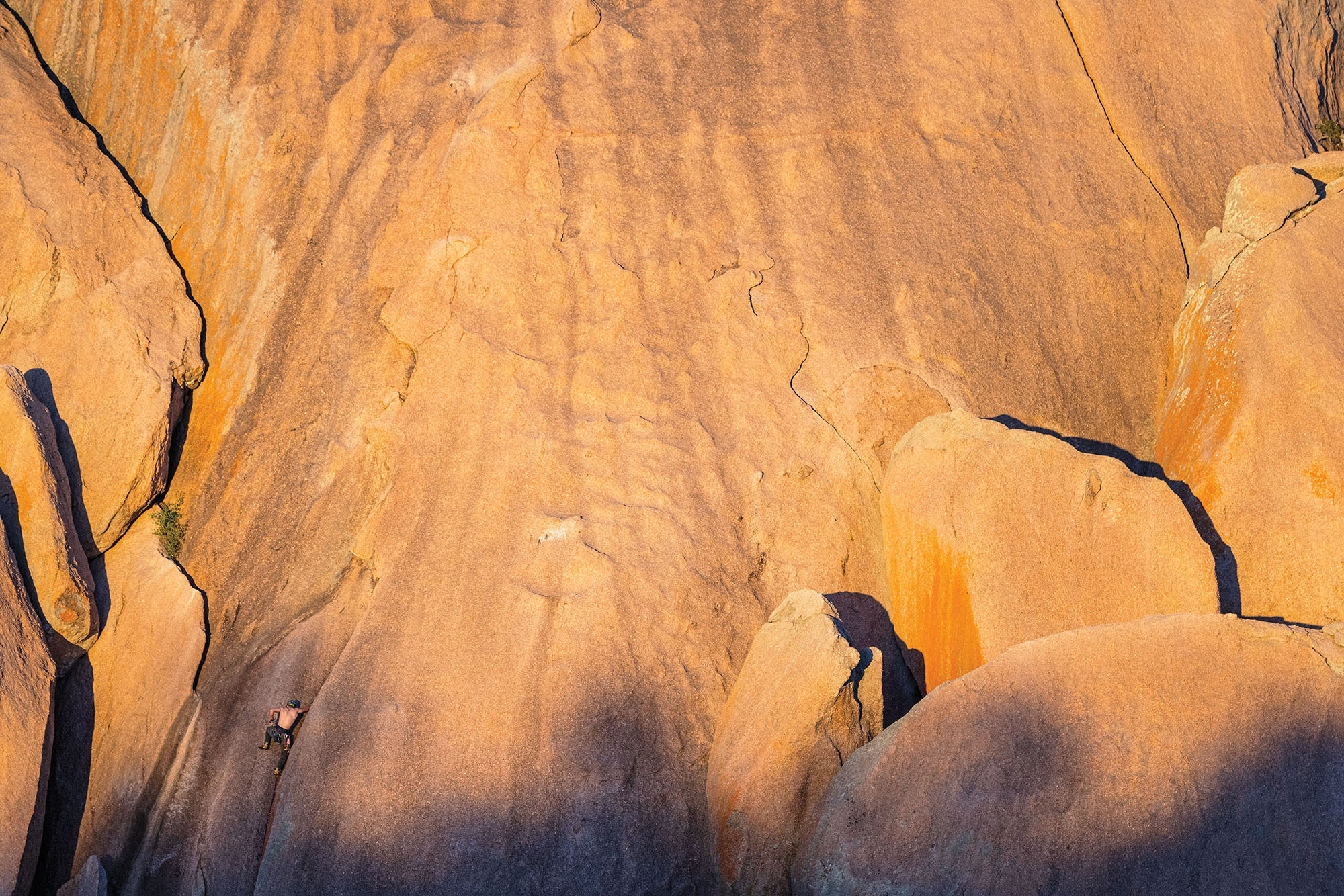
It’s an old question: How can we gain more support for acquisition and protection of wilder lands if people have not been exposed to their charms? Celebrated writer and environmentalist Wallace Stegner famously pointed out that the American idea of “wilderness” had value to society as just that—an idea—even if one never set foot into it. But were we willing, we could experience what he called “the birth of awe,” particularly in the wild spaces of the West.
“It gets deadly out here in the sun,” Cochran says. As it gets hotter during the summer months, he goes out onto the rock and measures the temperature. He pulls a plastic pistol thermometer from his drawer to show me. “The highest I’ve measured is 150 degrees,” he says. But on this cold winter day, the Hill Country sleeps beneath a shell of ice. Water trickles down every rivulet as we pass clear, shallow vernal pools where over time water has eroded small depressions in the shield. Tiny fairy shrimp live in these pools, their eggs somehow able to survive the desiccating and rehydrating cycles of the ponds. In the damp red-pink detritus of the eroding mountain—it’s always changing, with giant Easter Island-style boulders loosening and sliding slowly down the mountain’s flank—Enchanted Rock looks like a playground beyond one’s imagination.
The dome is said to emit groans and other eerie sounds as the rock expands and contracts in the heat of day and the cooling of night. I kneel and place my ear to the mountain to try to hear any tremors, but today the mountain is quiet, as is the rest of the chilly landscape. There are no other hikers—not one. It seems a statistical impossibility. In the distance, a sea of shimmering forest-green juniper is frozen in time.
The ice storm has passed, leaving the rock and trees and grasses with a slick silver skin. We try to stay on the trail, but it’s tricky. “Each year, Google Earth shows a widening spiderweb of ‘social trails’ where hikers have branched off to make their own paths,” Cochran says. It’s an unplanned system accompanied here and there by hikers’ inescapable spoor, often with white tufts of tissue paper blooming behind rocks in every season. As we continue to explore, I admit Enchanted Rock looks like a park. While it is true there are no paddleboat or bike rentals, no air-conditioned lodges or restaurants, there are a lot of picnic tables.
The historical narrative at Enchanted Rock is incomplete. There is a plaque from 1936 commemorating Captain Jack Hays of the Texas Rangers for fighting some Comanches on top of the dome and “inflict[ing] upon them such heavy losses that they fled.” The Comanches were furious at Hays for violating their sacred mountain. There are also the occasional metates, small worn-out depressions in the stone where for thousands of years the tribe that called themselves Nermernuh, or “The People,” ground nuts and roots in the daily business of living. The tribe—in Oklahoma now—does not have a partnership with Enchanted Rock. Artifacts, as they’re discovered, are directed to a lab in Austin for storage.
Just as The People relied on Enchanted Rock for water, so do local communities today. The natural area is home to Sandy Creek, the ephemeral creek that feeds the Colorado River and several others in the Hill Country. These include the 12 rivers in the 17 counties that are the focus of the Hill Country Alliance, an environmental advocacy nonprofit based in Dripping Springs. Among other services, the organization works with landowners on land stewardship practices to improve land health and watershed function. “Any rainwater that we can capture in both rural and urban areas can increase our water supply and offset demand on the Trinity and Edwards aquifers,” Executive Director Katherine Romans says. She reminds me Enchanted Rock is also vital to the sanctity of the Hill Country’s dark skies.
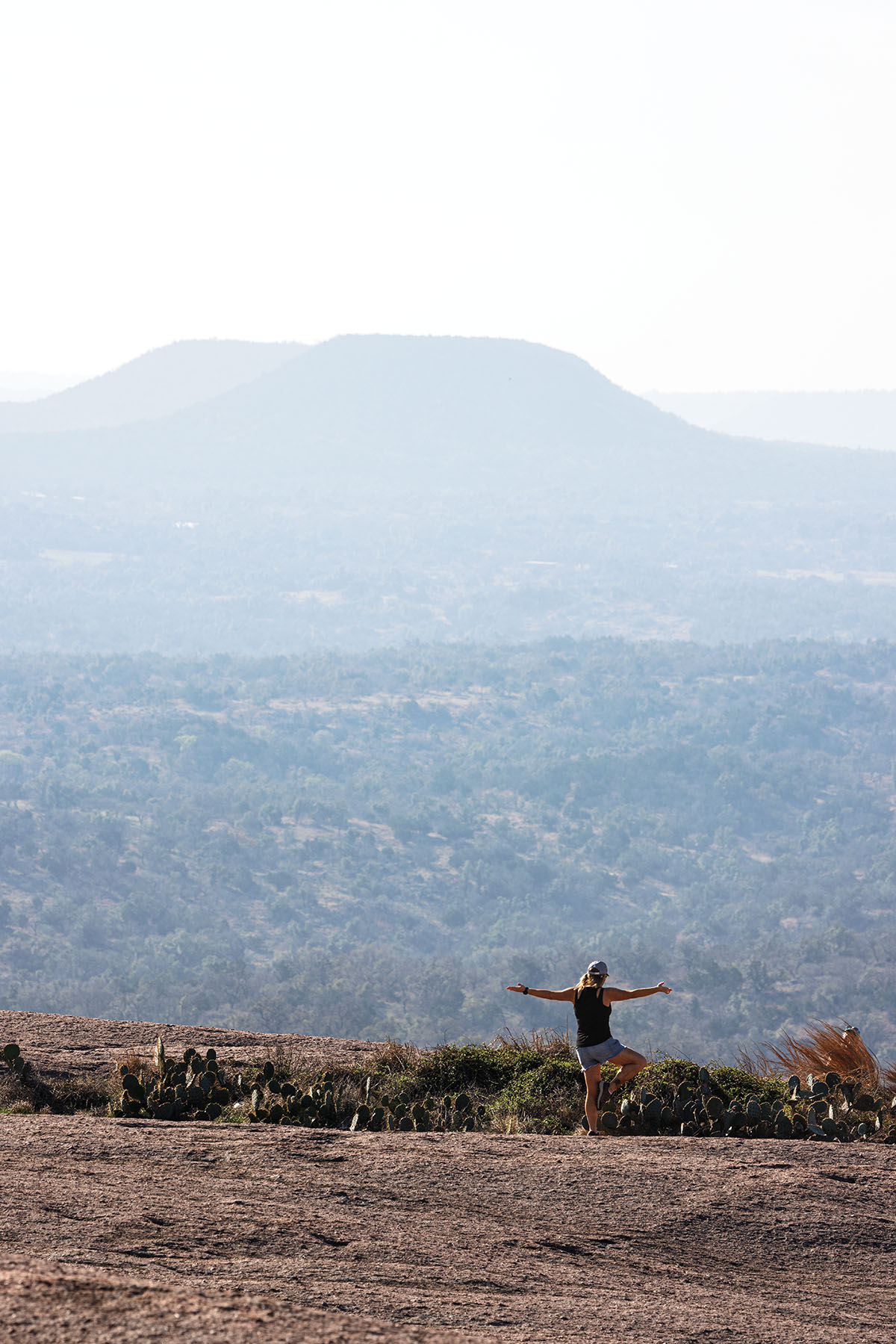
In his letter to the Texas Legislature a century ago, Neff wrote: “Texas, by nature, is rich and radiant in scenic beauty spots peculiarly adapted in climate and environment to out-door life. These primeval and picturesque places of native charm and characteristic beauty are rapidly disappearing before the onward march of cold, consuming commercialism. These places suited for park and picnicking purposes should be preserved not only for the present, but for posterity … [T]hese breathing spots for humanity where the weak, the weary, and the worn are nursed, in the lap of nature, back to health, wealth, and happiness, should be established.”
We cannot go back in time, but we can look ahead and plan. Are we creating these spaces for we, the people, as Neff did in the beginning, or for the animals that were here first and which bring us such pleasure? It’s a Catch-22. I’ve long fantasized about a collective of landowners in West Texas with immense acreages collaborating to create an entire ecosystem of open space, off limits to motor vehicles. With the immense ranches there, as few as four landowners could create a 1-million-acre park where people could walk, run, hike, ride horses—but no cars or bikes, for Texas already has plenty of roads.
Even when someone wants to gift an actual piece of Texas to the state of Texas, there is a commission to convince. The nearly 39,000-acre Chinati Mountains State Natural Area in Presidio, tentatively set to open in 2032, is currently in the planning phase. Before Chinati could be accepted as a gift, the donor was asked to provide an offset to the state for the theoretical loss of tax revenues that might occur from taking the rocky land out of “production.” (Economic data in other states shows protected public lands are drivers of state and county revenues).
Justin Fleury, lead park planner for the Texas Parks and Wildlife Department, is devising a series of trails that allow humans to safely experience Chinati without disturbing the very land we profess to love and seek to protect. The best part of his job, he says, is exploring the backcountry on his own. “I love trying to decide where a trail should go,” Fleury says. It’s a matter of where the land desires the trail to be. He also must coordinate plans and permits with county, city, and volunteer fire departments, various levels of law enforcement specialists, utility providers, and so forth. It’s a lot.
Stephanie Garcia, press office manager for TPWD, tells me of various openings of new properties coming around the state. “There’s a big one up in Palo Pinto County that we’re really excited about,” Garcia says. She’s referring to the Albert and Bessie Kronkosky State Natural Area—not to be confused with the forthcoming Palo Pinto Mountains State Park. These 3,814 acres of natural area in Bandera and Kendall counties are home to threatened enchantments such as golden-cheeked warblers, alligator lizards, sycamore-leaf snowbell, bigtooth maples, Boerne bean, and Texas spring salamanders.
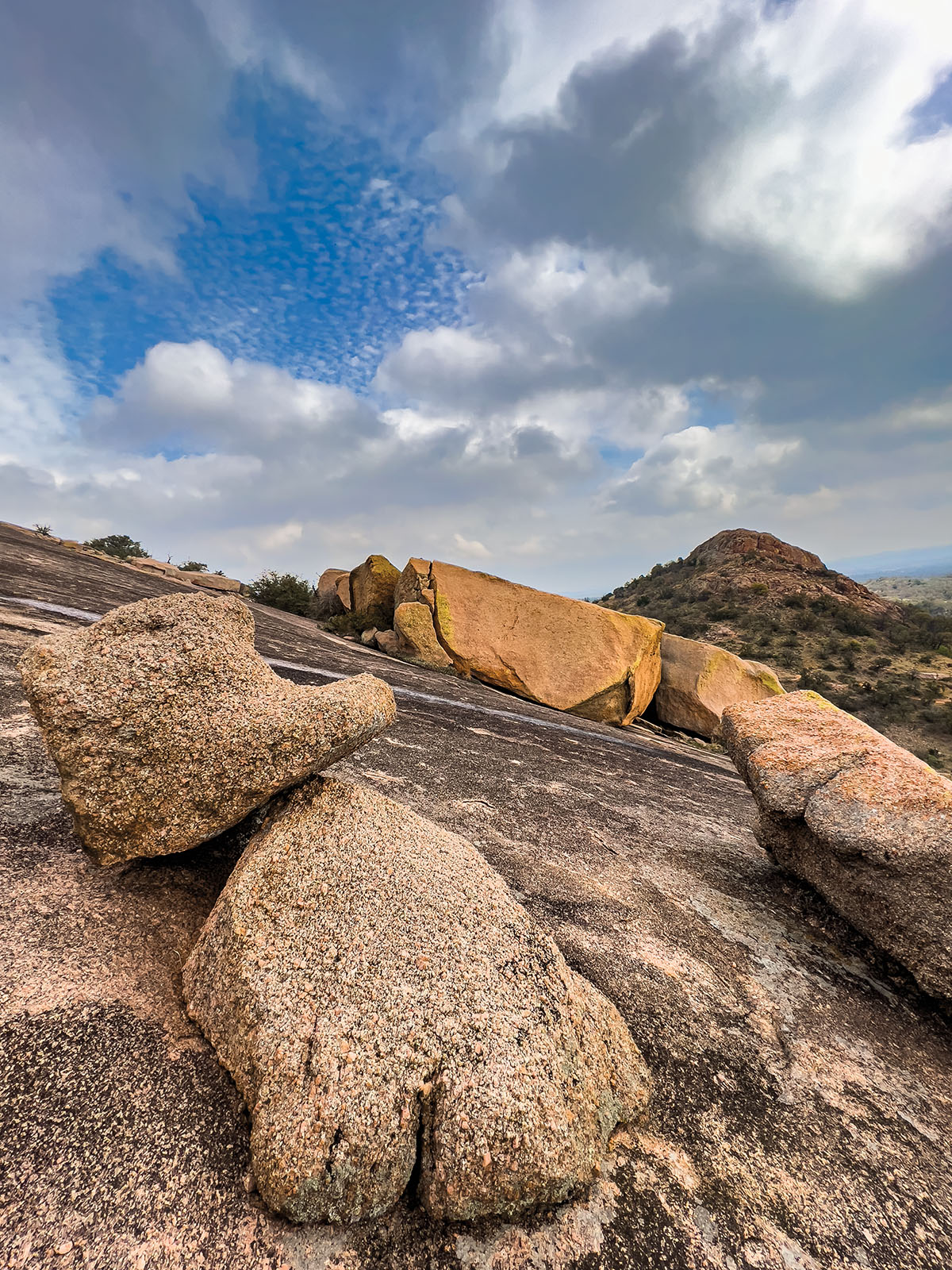
This gives me hope. We need parks. We need to bike and stroll—and cook burgers, veggie or otherwise. But the animals need land, too, and they need to be connected. Island biogeography, pioneered by naturalists Charles Darwin and Alfred Wallace, teaches us that plants and animals are safer in large areas than in small ones, where the pressures they face—such as predators—have easier access to them. The necessary migration from one island to the next is the most perilous journey of all.
Do we have enough parks? Certainly not. Visitation is up while acquisitions are minimal. The math is not complicated. The tire-flattened toads and turtles and upside-down sunbaked armadillos tell the tale more than the numbers, for simply preserving a thing does not necessarily protect it.
If we can lay thousands of miles of pipelines to funnel oil and gas here and there, and we can string power lines like barbed wire crisscrossing the sky above us, what remains for the travel paths of tarantulas and chaparral cocks, quill pigs and gray foxes, ocelots, black bears, and mountain lions? What space remains for the flight of whooping cranes, barn owls, and curve-billed thrashers?
The more parks we have, the more breathing space we can give our natural areas. As the world warms, it is expected that more wild things will become increasingly nocturnal, so they can not only move without being seen but also can escape, or at least mitigate, the rising heat.
Neff did the best he could for Texans. He could not see this far into the future, but he knew that we would need the natural world more than ever. A tip of the hat to him, then, and a sobering thought for the rest of us: Will we protect Texas for Texans of the next century? Will we share it with them, or will they have to read about it as something we once loved?
